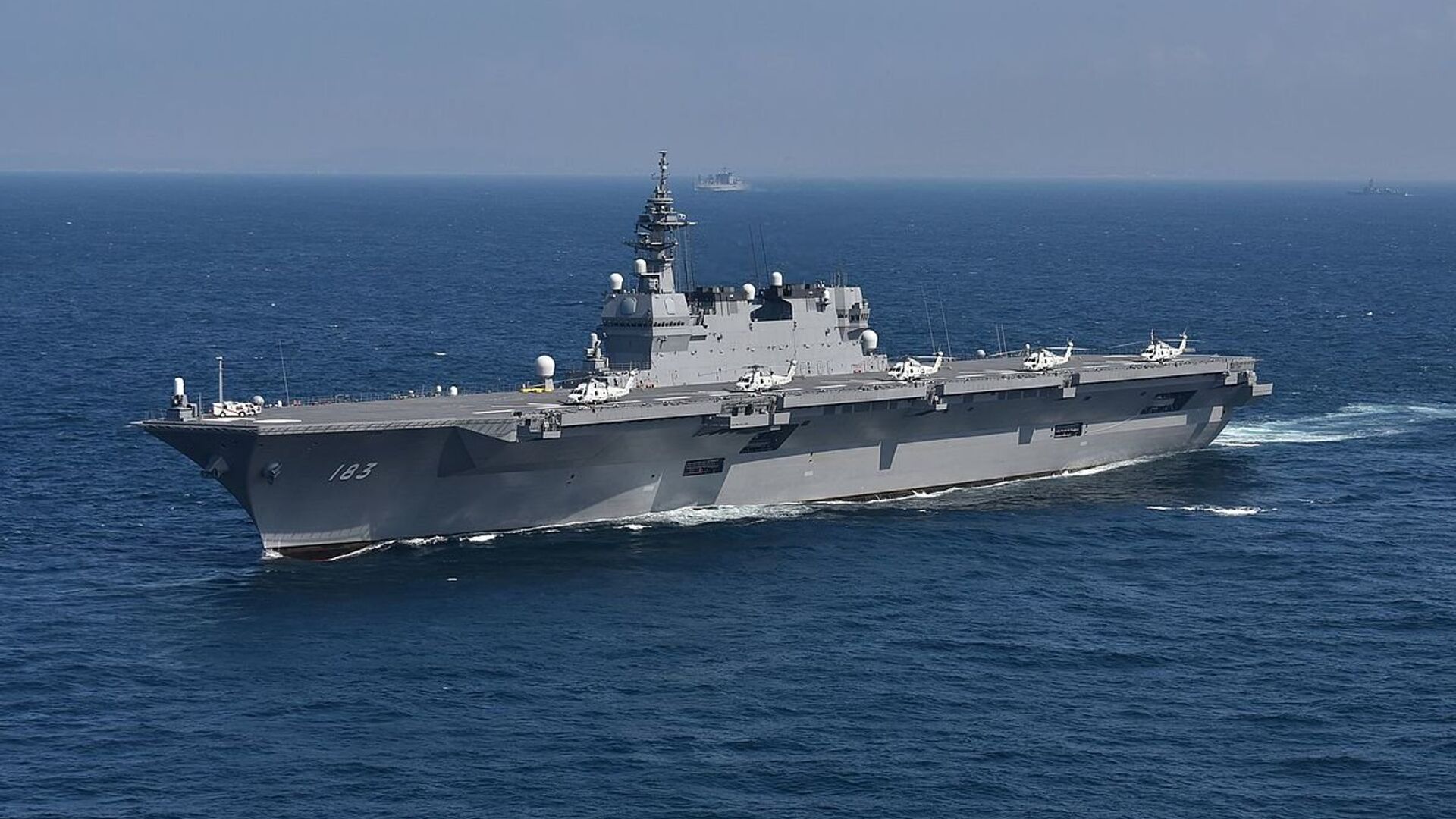https://sputnikglobe.com/20211002/us-marine-pilots-to-begin-testing-f-35bs-on-japans-de-facto-aircraft-carrier-izumo-1089594408.html
US Marine Pilots to Begin Testing F-35Bs on Japan’s De Facto Aircraft Carrier Izumo
US Marine Pilots to Begin Testing F-35Bs on Japan’s De Facto Aircraft Carrier Izumo
Sputnik International
The Japanese Ministry of Defense has announced US Marines will help test the ability of the cruise Izumo, a de facto aircraft carrier, to operate F-35B Joint... 02.10.2021, Sputnik International
2021-10-02T00:22+0000
2021-10-02T00:22+0000
2021-10-02T00:22+0000
military & intelligence
japan
f-35b
js izumo
https://cdn1.img.sputnikglobe.com/img/105555/65/1055556520_0:63:1201:738_1920x0_80_0_0_674e6a9a8d8ee8c60dba54889c1c9ca3.jpg
The tests will be carried out between October 3 and 7 in the Pacific Ocean off the Japanese coast, Defense News reported. The Izumo was docked on Thursday at Marine Combat Air Station Iwakuni in Yamaguchi Prefecture, a base in western Japan that houses two USMC F-35 squadrons.Like the United Kingdom, Japan is slated to buy hundreds of the stealthy jets from Lockheed Martin, but doesn’t have enough to conduct tests on its warships being modified to carry them. Marine F-35 pilots are deployed on the British HMS Queen Elizabeth on its inaugural cruise, and they are now also helping to fit out Izumo.Japan is to receive 42 of the F-35Bs, according to a 2019 deal, but the first isn’t slated to arrive until 2023. Izumo has further upgrades to receive, as well, which it will get in 2025. Meanwhile, Kaga is expected to get all its upgrades next year.They will be the first aircraft carriers fielded by Japan since the end of World War II, when it deployed dozens of flattops as part of its Pacific-spanning war of conquest that brought it into conflict with the United States, China, the British Empire, and the Soviet Union, resulting in its defeat and disarmament."The review of the new defense guideline is extremely meaningful to show the Japanese people and the world what is truly necessary in our defense to protect the people and to serve as the cornerstone of the future (for the Japan Self-Defense Forces),” he added.The modernization is motivated in part by increasing tensions with China, with which Japan has overlapping claims to islands in the East China Sea. However, the US has also put heavy pressure on its Pacific allies to take a more bellicose stance against China as part of its own strategic shift toward “great power competition” with Beijing and Moscow.
japan
Sputnik International
feedback@sputniknews.com
+74956456601
MIA „Rosiya Segodnya“
2021
News
en_EN
Sputnik International
feedback@sputniknews.com
+74956456601
MIA „Rosiya Segodnya“
Sputnik International
feedback@sputniknews.com
+74956456601
MIA „Rosiya Segodnya“
military & intelligence, japan, f-35b, js izumo
military & intelligence, japan, f-35b, js izumo
US Marine Pilots to Begin Testing F-35Bs on Japan’s De Facto Aircraft Carrier Izumo
The Japanese Ministry of Defense has announced US Marines will help test the ability of the cruise Izumo, a de facto aircraft carrier, to operate F-35B Joint Strike Fighters. The warships were recently modified to accommodate the advanced jet aircraft, which can takeoff and land vertically.
The tests will be carried out between October 3 and 7 in the Pacific Ocean off the Japanese coast,
Defense News reported. The Izumo was docked on Thursday at Marine Combat Air Station Iwakuni in Yamaguchi Prefecture, a base in western Japan that houses two USMC F-35 squadrons.
Like the United Kingdom, Japan is slated to buy hundreds of the stealthy jets from Lockheed Martin, but doesn’t have enough to conduct tests on its warships being modified to carry them. Marine F-35 pilots are
deployed on the British HMS Queen Elizabeth on its inaugural cruise, and they are now also helping to fit out Izumo.
Because the Japanese constitution forbids offensive warships, the JS Izumo is categorized as a multi-purpose destroyer, despite having a massive flight deck and being larger, at 27,000 tons, than many aircraft carriers explicitly defined as such. Izumo and its sister ship, Kaga, were originally built for helicopters, but have been
modified to carry the F-35B by having its flight deck reinforced to stand up to the high heat of its jet engines.
Japan is to receive 42 of the F-35Bs, according to a 2019 deal, but the first isn’t slated to
arrive until 2023. Izumo has further upgrades to receive, as well, which it will get in 2025. Meanwhile, Kaga is expected to get all its upgrades next year.
They will be the first aircraft carriers fielded by Japan since the end of World War II, when it deployed dozens of flattops as part of its Pacific-spanning war of conquest that brought it into conflict with the United States, China, the British Empire, and the Soviet Union, resulting in its defeat and disarmament.
"Under the drastically changing security environment around Japan, the government will take all possible measures to protect the lives and assets of Japanese people," Yoshihide Suga, who at the time was chief cabinet secretary but is now prime minister,
said in June.
"The review of the new defense guideline is extremely meaningful to show the Japanese people and the world what is truly necessary in our defense to protect the people and to serve as the cornerstone of the future (for the Japan Self-Defense Forces),” he added.
The modernization is motivated in part by increasing tensions with China, with which Japan has overlapping claims to islands in the East China Sea. However, the US has also
put heavy pressure on its Pacific allies to take a more bellicose stance against China as part of its
own strategic shift toward “great power competition” with Beijing and Moscow.



